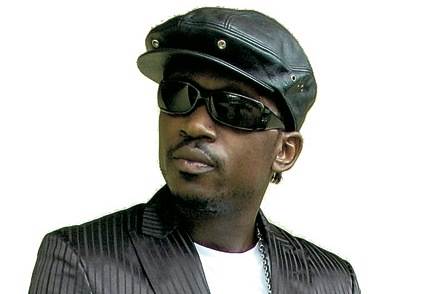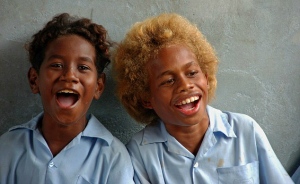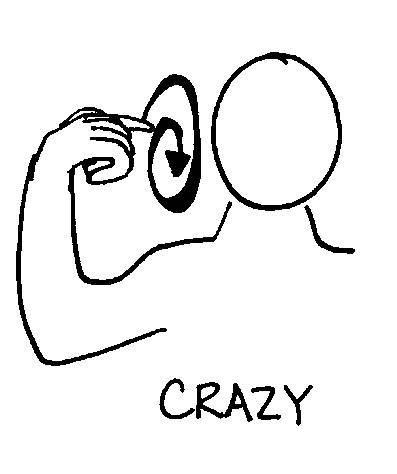KD DID KNOW WHEY HIM A SEH
Busy Signal pleads not guilty
Jamaica Observer
Tuesday, June 26, 2012

POPULAR Jamaican deejay Busy Signal, pleaded not guilty to one count of failure to appear in court yesterday.
Busy Signal, whose real name is Glendale Gordon, is accused of fleeing the US to avoid a drug trial a decade ago.
Busy Signal…pled not guilty in a Minnesota court.
1/1
Gordon could face up to five years in prison if convicted on that count. He was ordered detained pending his trial.
He was charged in February 2002 with two counts related to cocaine trafficking. He fled before his trial was to begin in Minnesota and has been a fugitive for the past decade, Assistant US Attorney Andrew Dunn, said in court.
Busy Signal was detained by authorities in London last month who suspected he was traveling with false documents, including a passport that listed a different name. He was allowed to fly to Kingston, Jamaica, and was arrested at the airport there.
Gordon waived his right to an extradition hearing.
The cocaine charges still exist, but because of extradition treaties, any future prosecution on those counts would have to be worked out between the Jamaican and US governments.
Gordon’s attorney, Bill Mauzy, said in court that the US doesn’t have jurisdiction to prosecute Gordon on the drug charges.
Read more:http://www.jamaicaobserver.com/entertainment/Busy-Signal-pleads-not-guilty#ixzz1yv6cqPRj
BUSY PETITION
https://wwws.whitehouse.gov/petitions/%21/petition/exonerate-glendale-gordon-aka-busy-signal/3Bdk8kt3?utm_source=wh.gov&utm_medium=shorturl&utm_campaign=shorturl
MY FRIEND’S MILK SHAKE IS BETTER THAN HERS..
big up mi nice clean fren tafeiva bossladii mi nah lie tho u did look better a shoes swag than ur own party d shoes n d dress bad….anyways eva bless ruth aka grandma ruth the one in the picture with the little bwoy a walk a tell people how she take mi fren man y she dont tell people say baliff come tek bk d car n a bus she affi a tek….she well a put up bout 1 year anniversay n frenchman still a call call mi fren ruth buy ati ticket already shi shoulda save it put towards har car big up mi look good fren tafeiva har pum pum tunup yea uuuuuuuuuuuuuu



bbm *cover eyes*
MET THIS LIL GURL IS 19TEEN AND DEH WID BIG DUTTY OMAR WEH WALK AND F— DUNG THE PLACE!!! BUT WEH HURT ME HEART IS WHEN ME HEAR HOW HIM CLASSSS THE LITTLE GURL AND IT SO SAD CAUSE SHE LOST IN LOVE WITH HIM NO MAN SHE NEEEED A REALITY CHECK CAUSE A NUFF NICE CLEAN GOOD MAN LOOK HER AND SHE NAW LOOK PAN DEM……….SIGHHHHHHHHHHHHHHHHH MET I DONRT KNOW HER PERSONALLY ENUH BUT ME A TELL UH SHE YOUNG BUT SHE CAN PUT HER SELF TOGETHER EVEN WHA DAY SHE KEEP PARTY AND OMAR NUH GUH SMFH! WELL ME HEAR SAY SHE SAY SHE DONE WID HIM CAUSE NTN NT THERE FOR HER ALL HE DOES IS BRING HER DOWN AND BRING DRAMA IN HER LIFE AND NOT EVEN A BAG JUIE HIM CAN BUT HER ! NOOOOO SAH JODI ISE THE F=== NUH LOOK BK DESO ! OMAR A GI UH BUN MORE THAN WHA NATIONAL A BAKE A DAY TIME SMH
FRANCE MUST BE SMOKING,,,REGGAE DIDN’T BEGIN THERE SO IT CANNOT BE THE CAPITAL…
Why France Is The New Reggae Economic Capital
In the late 1960′s when Reggae roared unto the scene, Jamaica held the helm as not only the homeland of reggae, but also its economic capital.
In the over four decades which have passed since then, Reggae has evolved into a global cultural meme no longer indigenous to Jamaican shores. From Hawaii, to Japan, UK To China, and every other nation in between, have spawned their own cultural interpretation of this Jamaican musical art form, which were rapidly assimilated into their respective societies.
During this time we flaunted the opportunity to protect one of our most valuable intangible national assets, which has now become a global creative common.
Economically, homegrown reggae generates roughly 185 million US Dollars in an industry that has a global market value of between 2-4 billion US dollars annually.
This being said, France, Germany, UK, Japan and US are not only listed as the top 5 consumers of reggae globally, but have now become Reggae’s biggest producers.
The Music Export Market has become one of France’s biggest earners, and recognizing this fact, much has been put into place to not only catalyze this burgeoning export market, but also to incubate and protect it. Artists are able to tap public financial resources to fund album projects, of which a small portion returns to continue the longevity of the fund, a sort of “Artists Credit Union” from how i understand the concept.
This new pedigree offspring of Reggae also presents itself as a much more marketable product. Seamless fusions of other afro centric influences such as AfroBeat, Dub, Jazz, Hiphop (another Jamaican product) and R&B, have allowed indie artists such as Asa, Ayo, Nneka, Gentleman, and the latest sensations Jboog and Selah Sue, to out sell local cohorts as much as 80 to 1 !!
French reggae artists consistently sell gold and platinum albums in france alone.
In comparison the two biggest locally selling albums in the last two years has been Protoje’s “Seven Year Itch” moving an approximated 1100 physical copies in 2011, and Nomaddz “The Trod” which sold another 1000 copies in 2010.
A major difference compared to France. Reggae Sumfest pulls 30,000 people each year and is viewed as one of Jamaica’s biggest tourism catalysts each summer.
In France, Reggae concerts of that size dot the local entertainment calendar weekly.
Numbers never lie.
And with that sad fact comes an even harsher reality.
France is now undisputedly the Reggae Economic Capital of the world.
The title will never be regained by Jamaica.
And be forewarned, if the Jamaican government does not make bold steps to protect the little dignity and national identity that we have left in regards to Reggae, I am sure, in the very near future, we will also lose the economic “whats left” that has now become recognized globally as the Jamaican Music Industry.
Lloyd Laing
Executive Editor
ASAFA AH DONT WANT WHAT YUH COOKING SOR
ITS ALL GOOD AND WELL FI SI YUH IN HE KITCHEN COOKING BUT MI NUH KNOW IF YUH NUH KNOW COOKING SPOON DIFFERENT FROM EATING SPOON…BETTA YET YUH NUH FRAID WHATEVA YUH A COOK SPLASH PAN U HAND AND BUN OFF WHEY DI RACETRACK CYAA PUT ON BACK? MI CYAA EAT FROM YUH BECAUSE YUH KITCHEN SWAGGA TOO TUN UP ….NO BARE CHEST OVA MI FOOD.. NO EXPOSED BOXERS OVA MI FOOD….NO LIKKLE SPOON HEENA MI FOOD..NO ASAFA COOKING MAH FOOD!.. AND TUH MUCH POT DEH DESSO ONE TIME..YUH HAVE PRESSURE COOKER, ONE, TWO FRYING PAN AND A KETTLE… ONE A DI PAN DEM LOOK LIKE A SALTFISH IT HAVE IN A DOE KNOW IF A PRESSURE YUH PRESSURE DI SALT FISH SOR ![]() ….BESIDES DI PRESSURE POT STILL HAVE A SPOON IN DEH..IT LOOK TO ME LIKE A DI CHENDI COMBO YUH MAKING AND A CANNOT TEK NUH CHECK I AM SO SORRY SOR
….BESIDES DI PRESSURE POT STILL HAVE A SPOON IN DEH..IT LOOK TO ME LIKE A DI CHENDI COMBO YUH MAKING AND A CANNOT TEK NUH CHECK I AM SO SORRY SOR ![]()
p.s this post is strictly for laughs………… goodmorningg
WHY SOME BLACKS ARE BLONDS
Riddle of Solomon solved: Scientists find South Sea islanders’ blond hair didn’t come from Europeans, but evolved separately

The inhabitants of the Solomon Islands – east of Papua New Guinea – are very dark-skinned – but have puzzled scientists for decades with their blond hair.
Now a genetic study has found that the islanders have a ‘homegrown’ gene that gives them blond hair – and it’s different from the one in Europeans.
‘Its frequency is between 5 and 10 percent across the Solomon Islands, which is about the same as where I’m from,’ said study author Eimear Kenny, PhD, who was born in Ireland.
A genetic study has found that the islanders have a ‘homegrown’ gene that gives them blond hair – and it’s different from the one in Europeans
‘Its frequency is between 5 and 10 percent across the Solomon Islands, which is about the same as where I’m from,’ said study author Eimear Kenny, PhD, who was born in Ireland
Gathering the data, accomplished in 2009 by Myles and co-first author Nicholas Timpson, PhD, was more difficult. Much of the Solomon Islands is undeveloped, without roads, electricity or telephones
Globally, blond hair is rare, occurring with substantial frequency only in northern Europe and in Oceania, which includes the Solomon Islands and its neighbors.
Many assumed the blond hair of Melanesia was the result of gene flow — a trait passed on by European explorers, traders and others who visited in the preceding centuries.
The islanders themselves give several possible explanations for its presence – they generally chalked it up to sun exposure, or a diet rich in fish, say the researchers.
‘Within a week we had our initial result. It was such a striking signal pointing to a single gene — a result you could hang your hat on. That rarely happens in science,’ said Kenny.
‘It was one of the best experiences of my career.’
In terms of genetic studies, the analysis was straightforward, said Kenny.
But gathering the data, accomplished in 2009 by Myles and co-first author Nicholas Timpson, PhD, was more difficult.
Much of the Solomon Islands is undeveloped, without roads, electricity or telephones.
It’s also one of the most linguistically diverse nations in the world, with dozens of languages spoken.
‘They have this very dark skin and bright blond hair. It was mind-blowing,’ said Myles.
‘As a geneticist on the beach watching the kids playing, you count up the frequency of kids with blond hair, and say, ‘Wow, it’s 5 to 10 percent.’
Around 5-10 per cent of the population of the Solomon Islands have blond hair – but it’s due to an entirely different gene from Europeans
The Solomon Islands: Many assumed the blond hair of Melanesia was the result of gene flow ¿ a trait passed on by European explorers, traders and others who visited in the preceding centuries
Myles and Timpson went village to village explaining what they wanted to do and asking for permission to gather data, Myles speaking in Solomon Islands pidgin, the most widely understood language.
When the local chief gave the OK, the researchers recruited participants and assessed hair and skin color using a light reflectance meter, took blood pressure readings and measured heights and weights.
They asked the villagers to spit into small tubes to provide saliva to be used for DNA extraction. In the span of a month they collected more than 1,000 samples.
Soon after, Kenny joined the lab and started the analysis, selecting 43 blond- and 42 dark-haired Solomon Islanders from the opposite 10 percent extremes of the hair pigmentation range.
She used these in a genome-wide association study, a method to reveal differences in the frequency of genetic variants between two groups, that usually requires thousands of samples.
Because the vast majority of human physical characteristics analyzed to date have many genetic and environmental factors, Kenny expected an inconclusive result that would require much further study. Instead, she immediately saw a single strong signal on chromosome 9, which accounted for 50 percent of the variance in the Solomon Islanders’ hair color.
The team went on to identify the gene responsible, TYRP1, which encodes tyrosinase-related protein 1, an enzyme previously recognized as influencing pigmentation in mice and humans.
Further research revealed that the particular variant responsible for blond hair in the Solomon Islands is absent in the genomes of Europeans.
‘So the human characteristic of blond hair arose independently in equatorial Oceania. That’s quite unexpected and fascinating,’ Kenny said.
****RULES**** 1. Debates and rebuttals are allowed but disrespectful curse-outs will prompt immediate BAN 2. Children are never to be discussed in a negative way 3. Personal information eg. workplace, status, home address are never to be posted in comments. 4. All are welcome but please exercise discretion when posting your comments , do not say anything about someone you wouldnt like to be said about you. 5. Do not deliberately LIE on someone here or send in any information based on your own personal vendetta. 6. If your picture was taken from a prio site eg. fimiyaad etc and posted on JMG, you cannot request its removal. 7. If you dont like this forum, please do not whine and wear us out, do yourself the favor of closing the screen- Thanks! . To send in a story send your email to :- [email protected]










Recent Comments